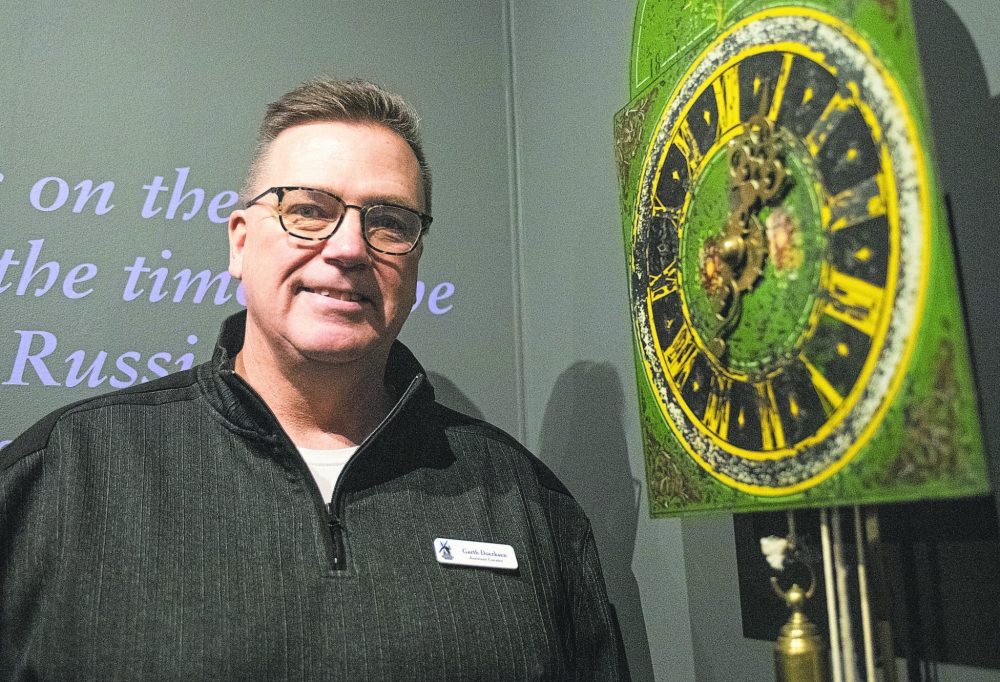150th Anniversary of Mennonite landing celebrated by descendants
Advertisement
It was a journey that took about seven weeks. Crossing about 12,000 miles for a chance at freedom. Freedom of religion. Freedom from military service. Freedom to run schools and institutions as the community wanted. But most of all it was a promise: A promise that these freedoms would never be taken away that led 7,000 Mennonites to leave Imperial Russia for Manitoba between 1874 and 1881.
Manitoba had just been established in 1870 and was looking for more people to settle within the province. Those 7,000 Mennonites left what is today Ukraine in order to continue their way of life in Canada.
“I think it’s a weighty moment and obviously we’re celebrating our ancestors’ achievements on the one hand, but also recognizing that they came because they were committed pacifists. They didn’t want to get involved in the military in the Russian Empire and the Canadian government guaranteed them that they can live their lives non-violently. So, it’s a time of reflection to see whether we as descendants of those newcomers have lived up to that ideal,” said Royden Loewen, a former professor of Mennonite studies and a direct descendant.

Loewen visited Ukraine twice, once as a young man and second time as a professor and he said it was a wonderful experience.
“The Ukrainian people are very friendly and warm and it was sobering to retrace the steps of your ancestors. The Steinbach people came to the Ukraine in 1804, they left in 1874 only 70 years later. So in terms of history they weren’t there that long.”
The Mennonites who came to Manitoba were granted two reserves: the East Reserve, in 1873 (settled in 1874), was an area of almost eight townships east of the Red River; and the West Reserve, in 1876, was an area of seventeen townships west of the Red River. Over time, they established 37 villages in the East Reserve, and about 50 in the West Reserve.
Most of the villages in both the East and West reserves have disappeared over the years. Today, in the former East Reserve, communities such as Steinbach, Kleefeld, New Bothwell, Grunthal and Blumenort are still in existence, while in the West Reserve Altona, Neubergthal, Reinland, Sommerfeld are among some of the surviving original Mennonite townships.
“As I’ve done more research into this and come across writings from my (great) grandfather, who was only nine years old when he came across, he reflected on (the move from Russia),” said Garth Doerksen, a direct descendant.
“Also his father, that would be my great great grandfather, there are quite a lot of writings between those two men and writing about the difficulty of the journey of the settlement and the first years and I’ve certainly have gained a whole lot of gratitude.”
Doerksen is also the assistant curator at the Mennonite Heritage Village. He said he is thankful for the decisions that his ancestors made in coming to Canada and that he and his family have benefited from the sacrifices and choices they made.
In order to celebrate the 150 years of the Mennonites landing in the Southeast, the museum is holding an exhibit in the Gerhard Ens Gallery. Seven sections will deal with the conditions in Imperial Russia, the move to Canada, what those first few decades looked like, and the relationships Mennonites had with their neighbours, among other topics. But it is the personal artifacts donated by the descendants of those settlers that will hold the deepest meaning in the exhibit.
“I think it’s important to be aware of our history and that is a way for us to reflect on our opportunities today and to help to determine how we create opportunities for our descendants so that we don’t just think of ourselves, but we think of the past, we think of the future,” said Doerksen.
“We have a responsibility, I think, to be grateful and we have a responsibility to ensure that our descendants are aware of these sacrifices made in the past, and have an appreciation in that, and that we continue to do the best we can to provide opportunities for our descendants.”
